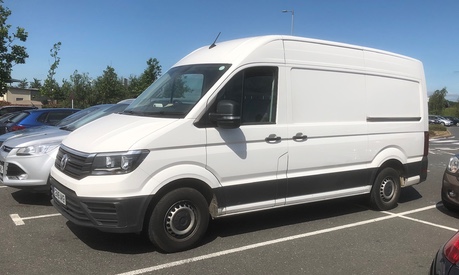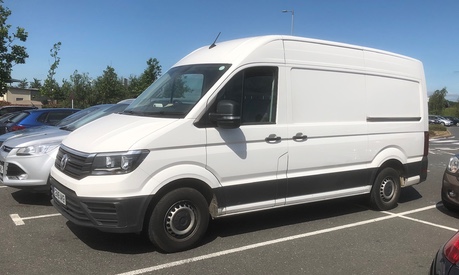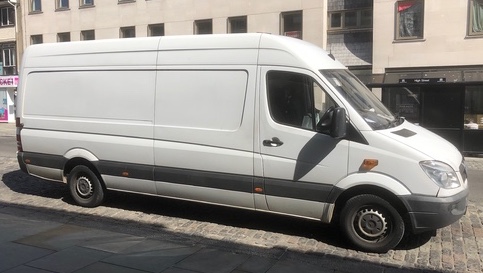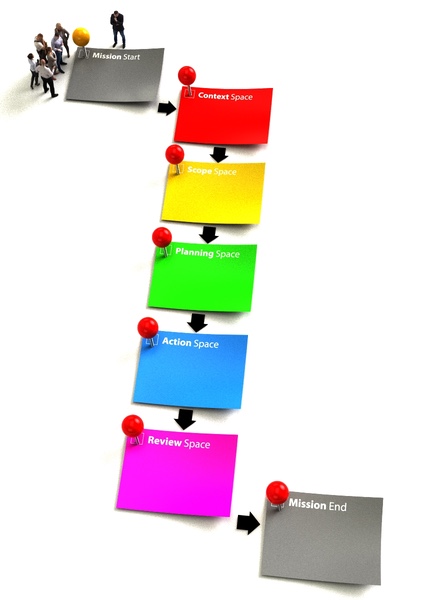EA in miniature – Part 1: Introduction
Blog: Tom Graves / Tetradian
One of the core themes of my work is that enterprise-architecture principles and practices should apply in essentially the same way for every type of content or context, at every scope and scale. I’ve often written about EA at the very large scale – ‘Really-Big-Picture Enterprise-Architecture‘. But what about the very small scale? – right down to the enterprise-architecture for a one-person organisation? That’s what we’ll explore here in this brief four-part series of posts.
(See also the companion video for this post: ‘Enterprise architecture in miniature – 1: Introduction – Episode 80, Tetradian on Architectures‘.)
— What’s the focus?
How do we make enterprise-architecture more accessible and usable for everyone, even down to the very small scale? How do we apply enterprise-architecture to itself? That’s been a key focus for me, for many years now.
Yet since it’s clear now that most of so-called mainstream ‘enterprise’-architecture has little interest in joining the party on this, how about going out and finding the real-world contexts where there is genuine interest, genuine need? Sounds a worthwhile thing to do, right?
In which case, put my money and more where my mouth is: go out and do it.
Make a real, viable, business out of making real, viable business and more, within a fast-changing world – especially one where the real drivers for change are much more ‘bottom-up’ than ‘top-down’.
Enterprise-architecture in miniature, for enterprise-architecture in miniature, taking enterprise-architecture out on the road, to wherever people need enterprise-architecture.
Spread the word on whole-enterprise architecture. Make the whole thing a demonstrator of those principles and methods.Show how to guide even the most complex of changes with simple tools linked together in easily-understandable ways. Show how architecture connects to real-design, real-world operations. Travel, research, engage; document in text, video, voice and more. Test, evaluate and improve the techniques in real-world practice. Make it real, for everyone.
We each choose our enterprise – the enterprise to which we choose to align, for our work-focus and more. For now, that’s mine.
Put it into practice.
— Where to start?
For me, the very first action is to get a quick overview. There’s a tool called SCORE that can help with that: a quick check of Strengths, Challenges, Options, real-world Responses, and factors for Effectiveness. What this shows me is that most of this is how I already engage in the enterprise of whole-enterprise architecture: the only bit that’s significantly different is that I’ll be travelling around, to go to places where we could apply that kind of enterprise-architecture.
And to do that, I’ll need some means to travel around – and not just travel around, but also do the work itself.
The usual consultancy approach is to fly everywhere, and stay in hotels – but that’s only feasible for larger clients, whereas the aim here is to address the needs of much smaller organisations. And the sheer amount of stuff I’ll need to carry around kinda pushes the limits of what’s feasible for air-travel anyway. Hmm…
Maybe some kind of ‘mobile-home’? – what the US folks call an ‘RV’, recreational-vehicle? That’d do the travel bit all right. But none of the ones I’ve seen would be much good for the work side of this enterprise.
Kinda pushes me towards thinking it through right from scratch – designing something purpose-built for the job.
Start from the ubiquitous white panel-van, perhaps? A ‘medium-wheelbase’ type?
Or maybe the slightly larger ‘long-wheelbase’ type – more space, but perhaps less easy to drive?
Either way, there are very real constraints that I’ll have to address. For example, I only have a standard driving-licence, so in most countries that’ll limit me to a vehicle of not much more than about three tonnes gross-weight.
Which means a total payload probably not much more than a tonne – all of the fit-out and everything else.
All to fit into a space of around six to seven square-metres, 60-80 square-feet – which is tiny.
Into which I have to fit a wide range of distinct uses – write, record, edit, engage, travel, cook, eat, sleep, rest, play and more.
And into which I have to fit and store a vast amount of stuff – everything I need to support each of those uses.
All of which has to work together, to support the whole.
And the vehicle itself is still only one aspect of this overall organisation, in context of its intended enterprise. Of course it’s important – it’s a key enabler, and the enterprise won’t work without it. But it’s not the enterprise itself: that distinction is crucially important!
Whole-enterprise architecture is always about the whole – the whole-as-whole.
— Where does IT fit into this?
But wait a minute, you might ask, what about IT? Isn’t enterprise-architecture mostly about IT?
The short-answer is yes, there is a fair bit of IT in this enterprise-story. Communications, controllers for solar and suchlike, apps for writing, video, editing and more, and a fair few sensors, too, for security, safety and more. But as with the vehicle, yes, the IT is important, and yes, it’s often a key enabler for key parts of the story – but it’s only one side of the story. There’s a bigger picture here – and we should never forget that. Placing all of the focus on something that’s merely one small part of the story not only misses the whole point of whole-enterprise architecture, but can often place the enterprise itself at risk. Not A Good Idea…
In short, yes, IT will come into this picture, eventually – don’t worry about that. But it’s not particularly central to this, and in any case it’s not where we should start. Where we do start is what I’ve done here so far: we start with the story – and build outward (or inward?) from there.
— What happens next?
What I’ve done in this post is explore a quick overview – the thinnest of sketches, really, with no real detail at all. To go further, we need to be methodical about it. The method I most often use for whole-enterprise architectures, of any kind, is that described in the post-series on ‘Towards a whole-enterprise standard‘ – particularly the section on method, as described in that series in detail or in simplified form. The process for the method is iterative, starting with purpose, the ‘Why’ for the architecture, working through the uncertainties, and settling out to plans for action, and then review to identify learnings from what’s been done, before looping round for the next iteration.
Since those posts came out a few years back, we’ve updated the method to a new, further-simplified, version, called Change-mapping. We’re still getting it ready for publication, but the core of it is a simple structure for a ‘mission’, as a wrapper around a set of distinct phases – Context, Scope, Plan, Action and Review:
In terms of that graphic, we’ve set out the current ‘mission’: identify what’s needed to make this enterprise work.
The next step, then, is to move on to the Context phase: get clear about the details for the chosen enterprise, and the organisation’s intended engagement with it – and then move towards scopes for action to make it happen.
That’s what we’ll explore in the next post in this series. See you there!
Leave a Comment
You must be logged in to post a comment.











